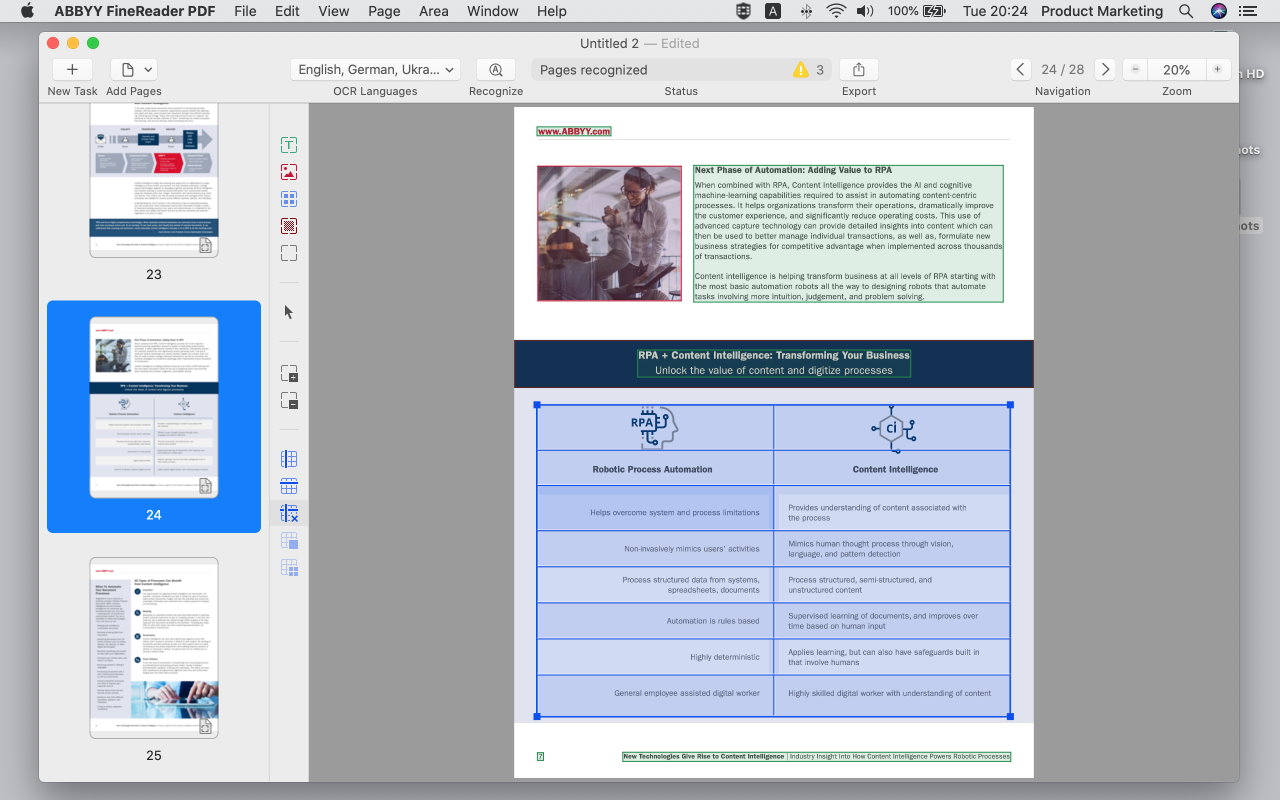

And what we’re going to do is we’re going to export this document itself to a PDF/A.
#Abbyy stellen code
I’m going to just copy in some code just to prevent you from having to hear me type for a bunch of code here. In this case, I’m going to do a couple of things. So I would write something like this.Īnd so that’s a very good way to kind of set up our script here.
#Abbyy stellen software
And if there’s a failure, we’re going to allow the software to fail nicely. So the reason why is we want the software to attempt to do something. So typically what we want to do is we want some sort of try catch. So one of the things that I like to do is I always like to use formal and good programming to do such a thing. You can call other APIs, but that’s what we’re going to do today is just simply export the document to a PDF/A, which is actually supported out of the box, but for today’s demo, we’re going to script it. You can write your own custom database call. You can write this script to do whatever you want.
#Abbyy stellen pdf
My script is going to export the document to a PDF archivable format, what we call a PDF/A format. Now I’m going to show you this script, but I want you to realize that you can do whatever you want here.
#Abbyy stellen how to
Now for today’s demo, I’m going to kind of show you maybe a best practice and how to write this script. We also have access to a processing object.

This script has a couple of things that we have access to. You’ll see, the first thing then that happens is we get a script. Now this is really something that you need to control based on your project, but not really the point of today’s demo, but you know, obviously set the setting to be the proper condition based on your project needs. And we will just simply for cases of testing today, we will just say, the errors are irrelevant. The type in this case will be a Custom export (script). For today’s demo, we’re going to add a new export setting. And when that opens, we will go to the export settings at the top left.

What we will do is we will open up the document definition via the project menu. And the way that we do that within the solution is by using a custom export script. Now, there are times in the workflow of a FlexiCapture project that we want to do something custom, or maybe we want to call a web service API, or maybe we want to write to a custom database in a custom format that maybe isn’t supported out of the box. Hello today, I’m going to show you how to create a custom export script. In this demo you will learn how to create a custom export script that exports a document to a PDF/A format.

Custom export scripts allow you to perform various tasks some of which include exporting a document to a PDF archivable (PDF/A) format, creating database calls, web service calls, and other API calls. Steven is passionate about understanding customers better, delivering value in every interaction, and making the voice of the customer part of all discussions and decisions.īefore joining ABBYY, Steven worked in various customer-facing leadership roles, lastly as a Support Leader for enterprise software at MicroFocus.Watch our video to learn how to create a Custom Export Script in ABBYY FlexiCapture. He now leads the Customer Excellence teams that focus on achieving customer success, and delivering professional services, customer support, customer experience, and education and operations. As an industry veteran and expert in holistic customer-related business processes, he truly understands that an exceptional customer experience is the key to successful and long-term business relationship.īefore becoming ABBYY’s SVP of Customer Excellence, he implemented a modern support structure and mindset as Vice President of Customer Support that enabled support teams to provide customers with a high-quality/low-effort experience. He has spent the last 25 years in enterprise software leading customer-facing initiatives. Steven Cronin is Senior Vice President of Customer Excellence at ABBYY.


 0 kommentar(er)
0 kommentar(er)
